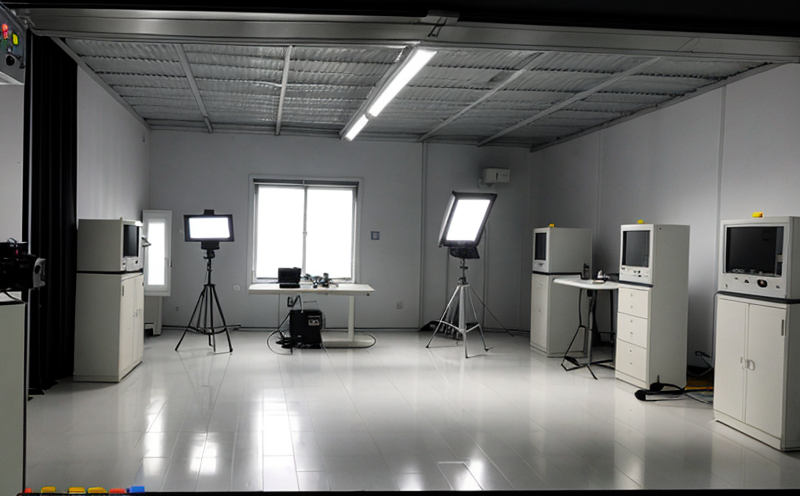IEC 62722 2 1 Photometric Testing of LED Luminaires
The International Electrotechnical Commission (IEC) Standard IEC 62722-2-1 defines the photometric performance requirements for luminaires. This standard is crucial for ensuring that LEDs meet the specified optical characteristics, which are critical for their intended use and performance in various lighting applications.
The testing process involves several steps to ensure compliance with this standard:
- Preparation of Samples: The LED luminaires undergo thorough cleaning and preparation. This includes ensuring that the luminaire is free from any foreign particles or contaminants that could affect the test results.
- Spectrometer Calibration: Before testing, the spectrometer used for photometric measurement must be calibrated against a high-precision reference device to ensure accurate measurements.
- Test Setup: The luminaires are mounted in a standard fixture that simulates real-world operating conditions. The setup includes a darkroom with controlled environmental parameters (temperature, humidity) to minimize external interference.
- Measurement Process: The photometric testing involves measuring the luminous flux, colorimetric data (CIE xy coordinates), and spatial distribution patterns over a specified range of angles. These measurements are typically taken in a 180° field of view for most luminaires.
- Data Analysis: After collecting the raw data from the spectrometer, it is analyzed using specialized software to derive the photometric parameters. This analysis includes calculating the lumen output, color rendering index (CRI), and other relevant metrics.
- Reporting: The final report details the measured values against the specified limits in IEC 62722-2-1. Compliance is determined based on these measurements.
The importance of photometric testing cannot be overstated, as it directly impacts the quality and reliability of LED luminaires. Non-compliance can lead to suboptimal performance, reduced lifespan, and potential safety hazards. By adhering to this standard, manufacturers ensure that their products meet stringent international requirements, enhancing brand reputation and consumer trust.
IEC 62722-2-1 is widely recognized for its comprehensive approach to photometric testing of LED luminaires. The standard covers not only the basic luminous flux but also includes detailed specifications on color quality metrics such as correlated color temperature (CCT), CRI, and the color appearance model.
The standard's scope is broad enough to accommodate various types of LED luminaires used in different sectors like residential, commercial, industrial, and outdoor lighting. By providing a standardized method for testing, IEC 62722-2-1 ensures consistency across manufacturers and regions, facilitating easier market entry and broader acceptance.
Given the increasing demand for energy-efficient and environmentally friendly lighting solutions, compliance with this standard is becoming increasingly important for LED manufacturers. It not only ensures product quality but also supports sustainability goals by promoting efficient use of resources and minimizing environmental impact.
Why It Matters
The photometric performance of LED luminaires plays a significant role in determining their suitability for specific applications. IEC 62722-2-1 provides a standardized framework to evaluate this performance, ensuring that the luminaire meets the required optical characteristics.
Performance Optimization: By conducting thorough photometric testing, manufacturers can identify areas where improvements are needed. This allows for optimization of the luminaire design, improving both efficiency and aesthetic appeal.
Regulatory Compliance: Many countries have regulations mandating compliance with international standards like IEC 62722-2-1. Failure to meet these requirements can result in product recalls or even legal action.
Market Differentiation: In a competitive market, meeting and exceeding the standard can set products apart from competitors. This not only enhances brand reputation but also opens up new markets and opportunities for growth.
Safety Considerations: Proper photometric testing ensures that luminaires do not emit harmful light levels or cause discomfort to users. Compliance with this standard helps prevent potential safety hazards, thereby protecting the end-users' well-being.
Environmental Impact: Efficient lighting systems contribute positively to environmental sustainability by reducing energy consumption and carbon emissions. By adhering to standards like IEC 62722-2-1, manufacturers play a crucial role in promoting sustainable practices within the industry.
Customer Impact and Satisfaction
The quality of photometric testing has a direct impact on customer satisfaction. By ensuring that LED luminaires meet the specified optical characteristics, manufacturers enhance the overall user experience. This leads to higher customer satisfaction and repeat business.
Better Lighting Quality: Customers appreciate well-designed lighting solutions that provide adequate illumination while maintaining color accuracy and uniformity. IEC 62722-2-1 ensures these qualities are consistently met, leading to more satisfied customers.
Longevity and Reliability: Proper photometric testing helps identify potential issues early in the product lifecycle, ensuring longer-lasting luminaires. This translates into lower maintenance costs and increased customer satisfaction over time.
Eco-Friendly Solutions: Compliance with this standard not only improves lighting quality but also supports environmental goals. Customers are increasingly favoring eco-friendly products, making compliance a key factor in gaining market share.
Competitive Advantage and Market Impact
In the competitive landscape of LED luminaires, meeting and exceeding IEC 62722-2-1 standards can provide significant advantages:
- Differentiation in a Competitive Market: By adhering to this standard, manufacturers can differentiate their products from competitors. This is especially important in a crowded market where unique selling propositions are critical for success.
- Access to Global Markets: Many countries have specific regulations requiring compliance with international standards like IEC 62722-2-1. Meeting these requirements opens doors to global markets, expanding business opportunities significantly.
- Better Brand Reputation: Compliance with recognized standards enhances brand reputation and trustworthiness. This positive image can attract more customers and foster loyalty among existing clients.
- Increased Market Share: By offering high-quality products that meet international standards, manufacturers can capture a larger share of the market. This is particularly true in sectors where lighting quality and performance are critical factors for customer satisfaction.
The impact of meeting IEC 62722-2-1 on the market cannot be underestimated. It not only enhances product quality but also supports broader industry goals, such as energy efficiency and environmental sustainability. By embracing this standard, manufacturers position themselves at the forefront of innovation and excellence in LED luminaire design.





